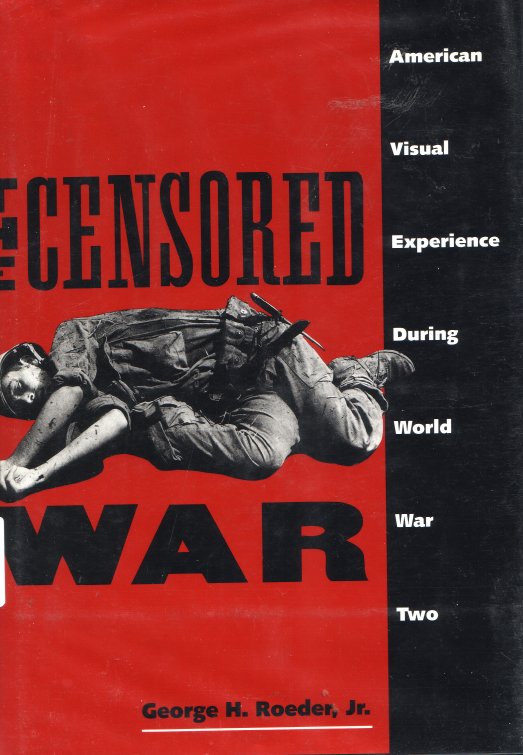
The Censored War

The book is about how certain aspects of the war were censored from Americans. It also goes into why certain aspects of the censorship were changed, and why.
Maneuvering public opinion was necessary, considering that much of the public was not wanting war. "Officials were especially worried that a significant portion of the population would press for a compromise settlement with Germany. A mid-1942 survey indicated that 'three out of every ten Americans would view favorably a negotiated peace with German army leaders.'"
That's not a majority, of course, but 30% is still a sizable minority.
The author then talks about how photographers in the war zones took photos and submitted them for a multi-level gauntlet of censorship officials and offices. At first, no photos were to show American soldiers killed or suffering, but FDR thought that might lead to false ideas about the war, that it wasn't really that bad at all, so the more violent images began to slip through to the public.
One area that wasn't really uncensored was the area of mental and emotional suffering, which was an area kept censored until after the war.
Hollywood was also involved in the war effort, of course, and it, too, could lead to some false assumptions. From May through November of 1942, for example, only 5 of 61 war films showed Americans actually dying in combat.
Next follows a section of rather gruesome photos from the time.
The second chapter goes into the place of blacks in the war effort. The Office of War Information, "sought to find ways 'to improve Negro morale without incurring too much criticism from whites.'"
Numerous (too numerous) Americans "wished to maintain distinctions, often enforced by law as well as custom, that banned blacks from neighborhoods, jobs, schools and universities, churches, railroad cars, museums, beauty pageants, professional sports teams, scout troops, tornado shelters, restaurants and hotels.""
The segregation extended into the military. "In 1940 almost all black sailors did menial labor in ship galleys. Blacks in the army served in strictly segregated units."" The Air Corps was not accepting applications from blacks, and the Marines did not allow blacks to join.
"...notably absent from depictions of military personnel in wartime advertisements in mainstream magazines were 'any features which might be interpreted as Jewish, or Central European, or in any remote way Colored.'"
"...the Office of Censorship banned publication of all photographs of the race riots that occurred on military bases in Louisiana, New Jersey and elsewhere."" Something else that was not to be shown were photos of black men dancing with white women.
There was also some waste in the war effort. Piles of scrap metal sat rusting, but photos of any of that were banned since it might discourage the scrap drive efforts.
Another chapter deals with movies. The Army Signal Corps produced around three thousand movies. Some movies of the time were virulently anti-Japanese, comparing them to "rats, monkeys, snakes and vermin." One paper ran a cartoon showing bodies of Japanese being thrown into the air in the bombing of Hiroshima, and it was labeled "Land of the Rising Sons."
There's more sections of photos, and a small discussion of the Japanese Americans that were interned during the war.
"I am perfectly willing to mislead and tell untruths if it will help to win the war."" -FDR
There's another chapter talking about prejudice in the U.S.
Although the book is called The Censored War, it could just as easily have been called Prejudice and Censorship in America. A significant portion of the book deals with prejudice, and it doesn't make for happy reading. (How people could be so hateful of other people due to the color of their skins or their nationality, especially during war time, is extremely hard to figure out.)
It's an interesting and somewhat unusual, definitely worthwhile book.
Main Index
Japan main page
Japanese-American Internment Camps index page
Japan and World War II index page
|